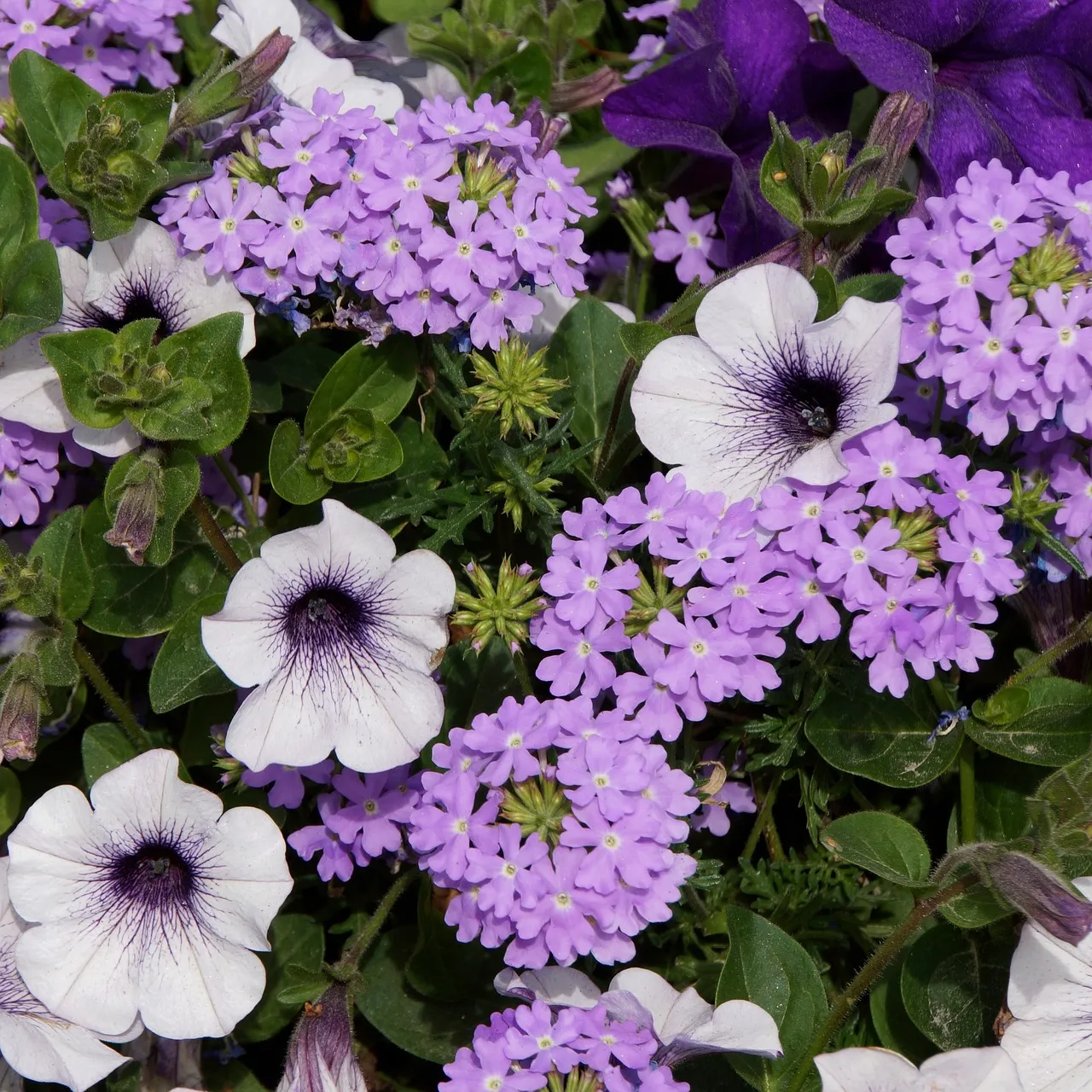Welcome to a green paradise! In our blog post, “Mastering Verbena Plant Care: Tips for Balcony Gardening Success,” we embark on a journey to unlock the secrets of nurturing vibrant Verbena plants in your balcony garden. Whether you’re a seasoned gardener or just starting, this comprehensive guide will equip you with the knowledge and skills to cultivate these beautiful blooms with confidence. Join us as we delve into the art of Verbena care and transform your balcony into a thriving botanical haven.
Introduction: The Vibrant World of Verbena

In the world of balcony gardening, few plants can match the vibrancy and versatility of Verbena. With its captivating clusters of colorful blooms, this resilient plant has the power to transform your humble balcony into a thriving botanical paradise. Whether you’re a seasoned green thumb or just embarking on your gardening journey, mastering the art of Verbena plant care holds the promise of a rewarding and lushly adorned outdoor space. This comprehensive guide will unveil the secrets to nurturing Verbena plants, covering everything from selecting the perfect spot to deciphering their water needs and harnessing their many benefits in your balcony garden.
Types of Verbena:
Verbena Bonariensis:
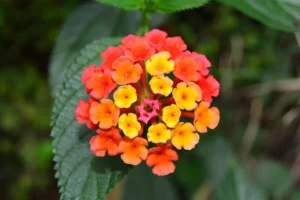
Verbena Bonariensis, also known as tall verbena or purpletop vervain, is a graceful and slender variety that adds an elegant touch to your balcony garden. This perennial beauty is cherished for its tall, airy stems adorned with clusters of vibrant purple blossoms. Its slender profile allows it to sway gracefully in the wind, creating a mesmerizing visual display. Verbena Bonariensis is not only a favorite among gardeners for its aesthetic appeal but also for its ability to attract pollinators like butterflies and bees, enhancing the biodiversity of your balcony space. This type of verbena thrives in full sun and well-draining soil, making it an ideal choice for balcony gardening enthusiasts.
Verbena Homestead Purple:
With its stunning deep purple flowers, Verbena Homestead Purple is a reliable and low-maintenance perennial variety. Its compact and bushy growth habit makes it a perfect choice for small balconies or container gardens. This verbena type blooms profusely throughout the summer, creating a striking carpet of color. It is highly resistant to pests and diseases, ensuring a hassle-free gardening experience. To master the care of Verbena Homestead Purple, provide it with full sun exposure and well-draining soil. Regular deadheading will encourage continuous blooming, keeping your balcony garden vibrant and eye-catching.
Verbena Rigida:
Verbena Rigida, commonly known as stiff verbena or tuberous vervain, boasts a unique charm with its rich lavender-blue flowers and wiry stems. This hardy perennial is particularly well-suited for balcony gardeners looking to add a touch of wild beauty to their outdoor space. Verbena Rigida thrives in a variety of soil types and is drought-tolerant once established, making it a resilient choice for balcony gardening success. Its low-maintenance nature and ability to attract butterflies and bees make it a valuable addition to any balcony garden.
Verbena Tenuisecta:
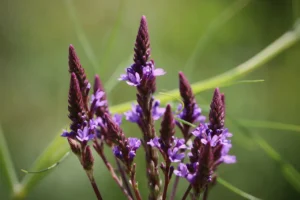
For balcony gardeners seeking a ground cover or hanging basket option, Verbena Tenuisecta, or moss verbena, is an excellent choice. This trailing annual verbena spills gracefully over containers or balcony edges, creating a cascading carpet of colorful blooms. It comes in a range of colors, from vibrant purples to soft pinks, allowing you to choose the shade that complements your balcony’s aesthetic. Verbena Tenuisecta thrives in full sun and well-draining soil, and its ability to withstand heat and drought makes it a reliable and stunning addition to your balcony garden.
Verbena Lanai:
Verbena Lanai is a series of compact, mounded verbena hybrids known for their profusion of bright, eye-catching flowers. This type of verbena comes in various colors, including vibrant reds, pinks, and purples, allowing you to create a balcony garden bursting with vivid hues. Verbena Lanai is well-suited for containers and hanging baskets, and it blooms continuously throughout the summer, attracting butterflies and other pollinators. To master the care of Verbena Lanai, ensure it receives full sun and well-drained soil. Regular deadheading and occasional pruning will keep this verbena variety looking its best.
Verbena Hastata:
Verbena Hastata, commonly referred to as blue vervain or swamp verbena, is a native perennial species known for its tall spikes of tiny lavender-blue flowers. While it may not have the compact and showy appearance of some other verbena varieties, it possesses a wild and naturalistic beauty that can add an enchanting touch to your balcony garden. Verbena Hastata is adaptable to various soil types and can tolerate wetter conditions, making it an excellent choice for balcony gardeners with diverse growing environments. Its flowers are attractive to bees and butterflies, promoting biodiversity on your balcony.
Verbena Canadensis:

Also known as rose verbena, Verbena Canadensis is a hardy and low-growing perennial that blankets your balcony garden with a profusion of rose-pink flowers. This verbena variety forms a dense mat of foliage, making it an excellent ground cover option for small balconies or as a border plant. Verbena Canadensis thrives in full sun and well-draining soil, and once established, it is drought-tolerant, requiring minimal water. Its vibrant blooms are a magnet for pollinators, including butterflies and hummingbirds, adding life and movement to your balcony space.
Verbena Superbena:
If you’re searching for a verbena variety that combines beauty and versatility, look no further than Verbena Superbena. This series of hybrid verbenas offers a wide range of colors and compact growth habits, making them perfect for container gardening and balcony landscapes. Verbena Superbena boasts continuous blooming throughout the summer, attracting pollinators and creating a stunning visual display. To master the care of Verbena Superbena, ensure it receives full sun and well-drained soil. With regular deadheading and minimal maintenance, you can enjoy the superb beauty of these verbenas on your balcony.
Verbena Obsession:
For balcony gardeners with a passion for vibrant colors, Verbena Obsession is a captivating choice. This series of verbenas offers an array of bold and striking hues, from fiery reds to electric oranges. With its mounding growth habit, Verbena Obsession adds a burst of color to containers and hanging baskets. These verbenas bloom profusely, attracting pollinators and creating a dynamic visual impact. To master the care of Verbena Obsession, provide full sun exposure and well-draining soil. Regular deadheading will encourage continuous flowering, ensuring your balcony remains a colorful and lively oasis.
Verbena Officinalis:
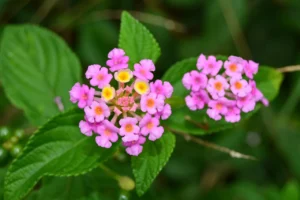
Verbena Officinalis, also known as common vervain, is a wild and herbal variety of verbena. While it may not display the showy blooms of its ornamental counterparts, it holds a special place in herbal medicine and traditional remedies. Verbena Officinalis is used to create soothing teas and infusions that can aid in relaxation, digestion, and stress relief. By incorporating this herbal verbena into your balcony garden, you not only add a touch of natural beauty but also access a source of holistic wellness.
These are just a few of the diverse and captivating types of verbena that can thrive in your balcony garden. Each variety has its unique charm and qualities, allowing you to create a balcony garden that reflects your personal style and preferences. Mastering the care of these verbena types will not only enhance the visual appeal of your balcony but also contribute to the well-being of your outdoor space, attracting pollinators and infusing it with natural beauty.
Choosing the Perfect Spot: Sun Requirements for Verbena
One of the first keys to mastering Verbena plant care is understanding its sun-loving nature. Verbena thrives when basking in the warm embrace of full sunlight. To ensure your Verbena flourishes, you’ll want to position your balcony garden where it receives a minimum of 6 to 8 hours of direct sunlight each day. South-facing balconies are often ideal for meeting Verbena’s sun requirements, as they tend to receive the most sun exposure throughout the day. However, east and west-facing balconies can also work, as long as they get ample sunlight.
Understanding Verbena’s Water Needs
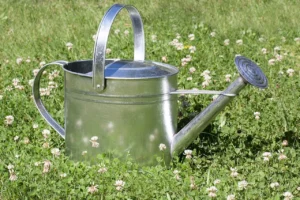
While sunlight is essential, mastering Verbena plant care also involves grasping its water requirements. Verbena appreciates well-drained soil, so make sure your potting mix allows excess water to escape. Keep the soil consistently moist but avoid waterlogged conditions, as Verbena can be sensitive to overwatering. The key is to strike a balance – water thoroughly when the top inch of soil feels dry to the touch. In hotter months, you may need to water more frequently, but always ensure excess water can escape to prevent root rot.
Annual or Perennial: Deciphering Verbena’s Lifespan
Understanding whether your Verbena is an annual or perennial is crucial to its long-term care. Some Verbena varieties are annuals, completing their life cycle in one growing season, while others are perennials, returning year after year. This distinction affects how you care for them. Annuals require replanting each year, while perennials demand ongoing maintenance. Knowing your Verbena’s lifespan will guide your gardening plans and expectations.
From Seeds to Saplings: Growing Verbena from Scratch
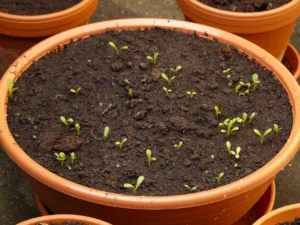
If you’re eager to embark on a gardening journey from the very beginning, growing Verbena from seeds is a gratifying endeavor. Start indoors by sowing Verbena seeds in well-draining soil. Maintain a consistent temperature of around 70°F (21°C) to encourage germination. Once the seedlings develop a few leaves, transplant them into larger pots or directly into your balcony garden. With patience and care, you can nurture these tiny seeds into vibrant Verbena plants that will grace your balcony with their beauty.
Caring for Established Verbena Plants
Once your Verbena plants are established, proper care is essential for their health and vitality. Regular deadheading, or the removal of spent flowers, encourages continuous blooming. Pruning leggy or overgrown stems helps maintain a compact and bushy shape. Keep an eye out for pests and diseases, addressing any issues promptly to keep your Verbena thriving. Moreover, ensure your plants receive adequate nutrients through regular fertilization to promote robust growth and profuse flowering. A little care goes a long way in ensuring your Verbena’s longevity and visual appeal.
The Benefits of Verbena in Balcony Gardens
Beyond its aesthetic allure, Verbena offers a plethora of benefits to your balcony garden. These plants are excellent at attracting pollinators like bees and butterflies, enhancing biodiversity in your outdoor space. Their vibrant blooms infuse life and color into your surroundings, creating a more inviting and visually appealing atmosphere. Moreover, Verbena’s sweet fragrance can transform your balcony into a fragrant oasis, making it an ideal setting for relaxation and unwinding. By mastering Verbena plant care, you’re not just nurturing a plant; you’re cultivating a multi-faceted garden gem.
Companion Plants: Verbena’s Ideal Balcony Buddies
When it comes to balcony gardening, creating a harmonious plant community is key to success. Verbena, with its versatility, makes an excellent companion plant. Pair it with other sun-loving flowers like marigolds, petunias, or zinnias to create a colorful and visually appealing arrangement. Additionally, its ability to attract beneficial insects, such as ladybugs and lacewings, can help protect your balcony garden from harmful pests, ensuring the well-being of your entire plant family.
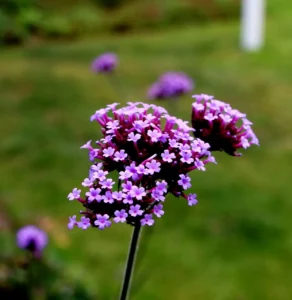
Verbena Trailing Varieties for Dramatic Effect
For those seeking a touch of drama in their balcony garden, consider the trailing varieties of Verbena. These cascading beauties spill over the edges of containers, adding a stunning vertical dimension to your garden. Whether planted in hanging baskets or allowed to flow from elevated pots, trailing Verbena varieties create a breathtaking display that is sure to catch the eye of admirers. Their graceful and abundant growth makes them a captivating addition to any balcony garden.
Thriving in Containers: Verbena’s Potted Potential
Mastering Verbena plant care is especially rewarding when you realize its potential in container gardening. Verbena’s adaptability to pots and containers opens up a world of possibilities for small-space gardeners. You can mix and match Verbena with various other annuals and perennials in containers, allowing you to curate an ever-changing, vibrant display. Container gardening with Verbena not only maximizes your limited space but also offers the flexibility to rearrange your garden as you see fit.
Balcony Landscaping with Verbena: Creative Ideas
Elevate your balcony garden to a whole new level by incorporating Verbena into your landscaping vision. With its diverse colors and growth habits, Verbena can be used to create captivating patterns, borders, or focal points. Experiment with different arrangements and combinations to infuse your balcony with a unique and artistic flair. Whether you prefer a symmetrical layout or a wild, naturalistic design, Verbena’s adaptability makes it an excellent choice for balcony landscaping.
Medicinal and Culinary Uses of Verbena
While Verbena is primarily known for its ornamental value, it also boasts medicinal and culinary uses. Verbena tea, made from its leaves and flowers, is celebrated for its soothing properties, aiding in digestion, relaxation, and stress relief. Additionally, Verbena leaves can be used to enhance the flavor of various dishes, from salads to desserts. Delve into the world of Verbena’s diverse applications, exploring both its culinary and medicinal potential.
Relaxation and Aromatherapy: Verbena’s Soothing Properties
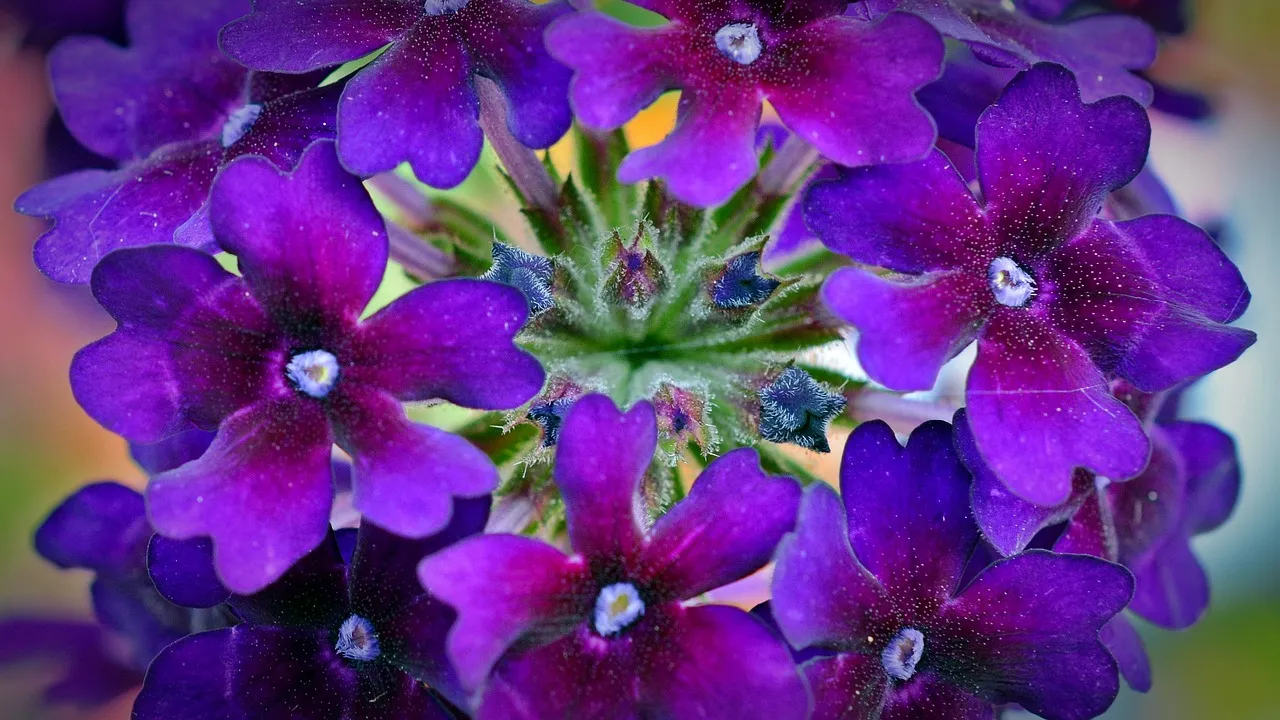
Transform your balcony into a serene retreat by harnessing Verbena’s aromatic potential. Verbena essential oil, derived from its fragrant leaves, is a valuable addition to your aromatherapy arsenal. Its citrusy and refreshing scent can promote relaxation, alleviate anxiety, and enhance overall well-being. Diffuse Verbena essential oil in your balcony space to create a soothing atmosphere that invites tranquility and peace.
Natural Remedies with Verbena: From Colds to Stress Relief
In addition to its aromatic benefits, Verbena holds a place in natural remedies. Explore its potential as a herbal remedy for common ailments, including colds, headaches, and stress. From Verbena-infused teas to herbal sachets, you can harness the plant’s healing properties to support your health naturally. Learning to incorporate Verbena into your holistic wellness routine is a step towards a healthier and more balanced lifestyle.
Verbena vs. Other Herbs: Making Informed Choices
As you delve deeper into the world of herbs, it’s essential to compare Verbena to other popular herbs like lavender, chamomile, mint, and lemon balm. Understanding their unique properties and uses empowers you to make informed choices for your balcony garden and overall well-being. By weighing the pros and cons of each herb, you can create a garden that caters to your specific needs and preferences, ensuring a thriving and harmonious green space.
In this comprehensive guide, we’ve journeyed through the vibrant world of Verbena, uncovering its care requirements, benefits, and versatile applications. Whether you’re a novice balcony gardener or a seasoned pro, mastering Verbena plant care offers a path to balcony gardening success. With each section of this guide, you’ve gained valuable insights into the art of nurturing Verbena, making your balcony a thriving haven of color, fragrance, and natural well-being.
Conclusion:
In conclusion, embarking on the journey of mastering Verbena plant care for balcony gardening success is a rewarding endeavor that can transform your outdoor space into a flourishing haven of natural beauty. By understanding the nuances of Verbena’s sunlight and water requirements, its lifespan, and the various types available, you can tailor your care approach to nurture these vibrant blooms to their fullest potential.
The benefits of Verbena extend beyond its aesthetic charm. It attracts beneficial pollinators, contributes to a biodiverse environment, and infuses your balcony with soothing fragrances, making it an inviting retreat for relaxation. Moreover, Verbena’s culinary and medicinal uses offer a practical dimension to your gardening experience, providing both flavor and natural remedies for a healthier lifestyle.
Whether you opt for trailing varieties, container gardening, or intricate landscaping, Verbena’s adaptability allows for creativity in your balcony garden design. Its companionship with other plants fosters a harmonious plant community that enhances overall well-being.
In mastering Verbena plant care, you’re not just cultivating a garden; you’re nurturing a thriving ecosystem of life and color. As you watch your Verbena flourish, attracting butterflies and bees, providing soothing aromatherapy, and offering natural remedies, you’ll find joy in the process of tending to this resilient and versatile plant. So, go ahead, embrace the tips shared in this guide, and embark on your balcony gardening journey with confidence, knowing that success and beauty await at your fingertips.
Most Frequently Asked Questions on Verbena
Verbena is a popular choice for balcony gardening, but it comes with questions. Let’s address the most common ones.
1. Is Verbena suitable for beginners in gardening?
Absolutely! Verbena is a resilient plant that’s forgiving of some beginner mistakes. With proper care, it’s an excellent choice for novice gardeners.
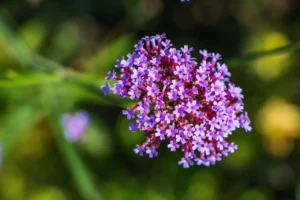
2. What’s the ideal time to plant Verbena seeds?
Sow Verbena seeds indoors in late winter or early spring. They can be transplanted outdoors after the last frost.
3. How often should I water my Verbena plants?
Watering frequency depends on weather and soil conditions. Generally, water when the top inch of soil feels dry.
4. Are there any special soil requirements for Verbena?
Verbena prefers well-draining soil. A mix of potting soil and perlite or sand works well for container gardening.
5. How do I deadhead Verbena properly?
To deadhead, simply pinch or snip off spent flowers at the base of the stem. This encourages continuous blooming.

6. Can Verbena grow in shade?
Although Verbena thrives in full sun, certain types can withstand partial shade, although they might not flower as abundantly.
7. Are there any common pests or diseases that affect Verbena?
Aphids and powdery mildew can be issues. Regularly inspect your plants and treat if necessary with organic solutions.
8. Can Verbena be overwintered indoors?
Yes, you can overwinter Verbena indoors by pruning it back and placing it in a bright, cool location.
9. What are some companion plants that pair well with Verbena?
Marigolds, petunias, zinnias, and salvias are great companions, creating colorful and harmonious balcony gardens.
10. Are there any specific Verbena varieties that are best for hanging baskets?
Verbena Lanai and trailing varieties are ideal for hanging baskets, spilling gracefully over the edges.

11. How can I attract pollinators like butterflies and bees with Verbena?
Planting Verbena in sunny spots and avoiding pesticides can naturally attract these beneficial insects.
12. Are there any special care considerations for Verbena in containers?
Container-grown Verbena needs good drainage, regular watering, and occasional fertilization for optimal growth.
13. What’s the best way to promote Verbena’s longevity?
Proper pruning, deadheading, and attention to soil and water needs will keep Verbena healthy and long-lasting.
14. Can Verbena be used in culinary dishes and teas?
Yes, Verbena leaves and flowers can be used in herbal teas and as a flavor enhancer in various dishes.
15. Are there any medicinal uses for Verbena?
Verbena has a history in herbal medicine, known for its potential in soothing teas and remedies for various ailments.
16. What’s the best way to overwinter Verbena outdoors?
In milder climates, mulching around the base of the plant can provide protection during winter months.
17. How can I revive a struggling Verbena plant?
Prune it back, ensure proper watering, and feed with a balanced fertilizer to encourage recovery.
18. Can I grow Verbena from cuttings?
Indeed, Verbena can be propagated from stem cuttings. Simply dip the cut end in rooting hormone and plant it in well-draining soil.
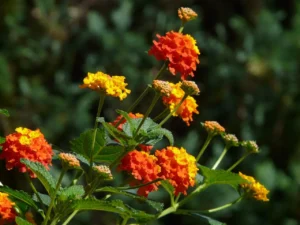
19. Is Verbena a good choice for attracting hummingbirds?
While Verbena primarily attracts butterflies and bees, its vibrant blooms may also entice hummingbirds occasionally.
20. What’s the best way to enjoy Verbena’s soothing properties for relaxation?
Mastering Verbena plant care is within reach, and these FAQs cover essential aspects of growing and nurturing Verbena in your balcony garden. With the right knowledge and a bit of TLC, you can create a thriving and beautiful outdoor space that welcomes pollinators, promotes well-being, and provides you with the joy of gardening success.
Are Verbena Flowers or Plants Edible?
Verbena, both the flowers and leaves, can indeed be edible, depending on the specific variety and its intended culinary or medicinal use. It’s crucial to discern which Verbena species you are dealing with, as some are more suitable for consumption than others.
Verbena Officinalis: Culinary and Medicinal Uses
Verbena officinalis, also known as common vervain, is one of the most recognized edible Verbena species. Its leaves and flowers are often utilized for various culinary and medicinal purposes. In the culinary realm, Verbena officinalis adds a subtle lemony flavor to dishes and beverages. It’s commonly used to infuse teas, imparting a refreshing and citrusy note. Additionally, it can be incorporated into salads, desserts, and sauces to enhance their flavor profile.
Verbena Hastata: A Medicinal Herb
On the other hand, Verbena hastata, or blue vervain, is primarily valued for its potential medicinal benefits. Its leaves and aerial parts are used to create herbal remedies and tinctures known for their potential in easing ailments such as anxiety, sleep disorders, and digestive problems. While it’s not typically used in culinary applications, it plays a vital role in traditional herbal medicine.
Cautions and Considerations
While some Verbena varieties offer culinary and medicinal potential, it’s essential to exercise caution and ensure you are correctly identifying the Verbena species in question. Not all Verbena plants are safe for consumption. Some may contain compounds that are toxic or cause adverse reactions.
Furthermore, when harvesting Verbena for culinary or medicinal purposes, it’s advisable to gather plants from reputable sources, such as garden centers or herb suppliers, to ensure their safety and purity.
Edible Verbena in Tea and Cooking
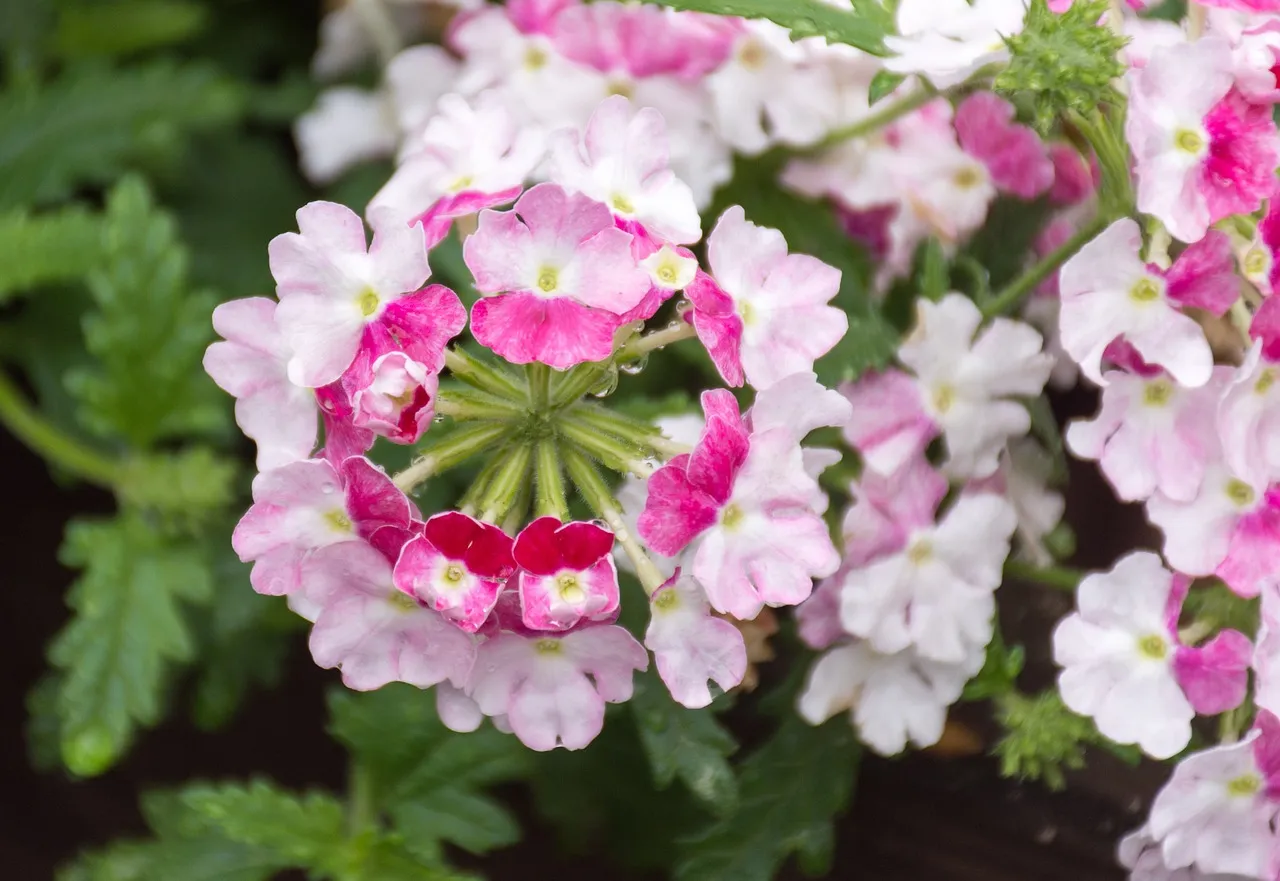
To enjoy edible Verbena in your culinary endeavors, consider these ideas:
Verbena Tea:
Infuse Verbena officinalis leaves and flowers in hot water to create a fragrant and soothing herbal tea. Add honey or a slice of lemon for added flavor.
Herb-Infused Oil:
Craft Verbena-infused oil by soaking Verbena leaves in your preferred carrier oil. Employ this fragrant oil to enhance salads or as a flavorful addition to roasted vegetables.
Salad Enhancer:
Sprinkle finely chopped Verbena leaves over salads or incorporate them into herb-based salad dressings for a subtle citrus twist.
Dessert Garnish:
Decorate desserts with fresh Verbena flowers for a visually appealing and fragrant touch. They pair well with fruit salads, sorbets, and cakes.
In summary, certain Verbena species, such as Verbena officinalis and Verbena hastata, offer edible components with culinary and medicinal potential. However, it’s crucial to correctly identify the Verbena variety and exercise caution when harvesting or consuming Verbena plants. Always consult reliable sources and consider individual sensitivities or allergies when incorporating Verbena into your diet or herbal remedies. With proper knowledge and care, Verbena can add a delightful citrusy note to your culinary creations or provide soothing herbal remedies for various ailments.
#BalconyGardening #VerbenaCare
